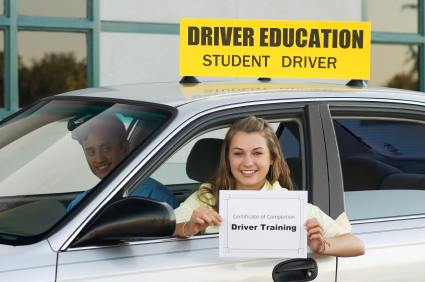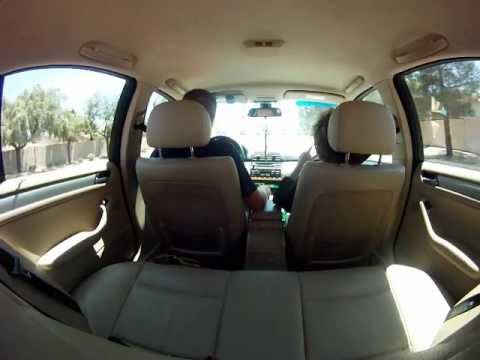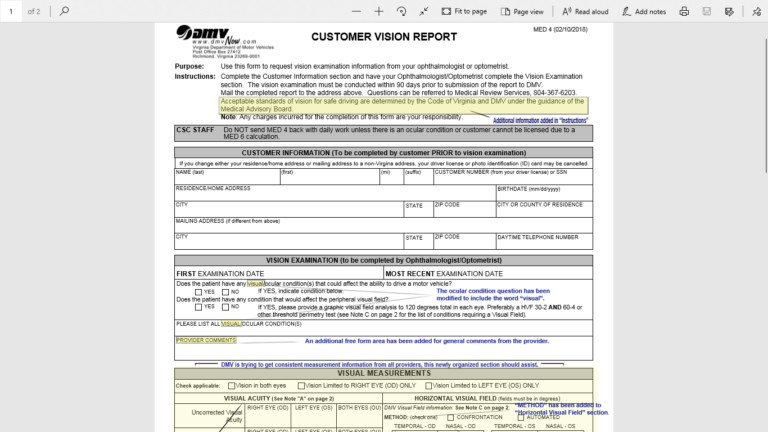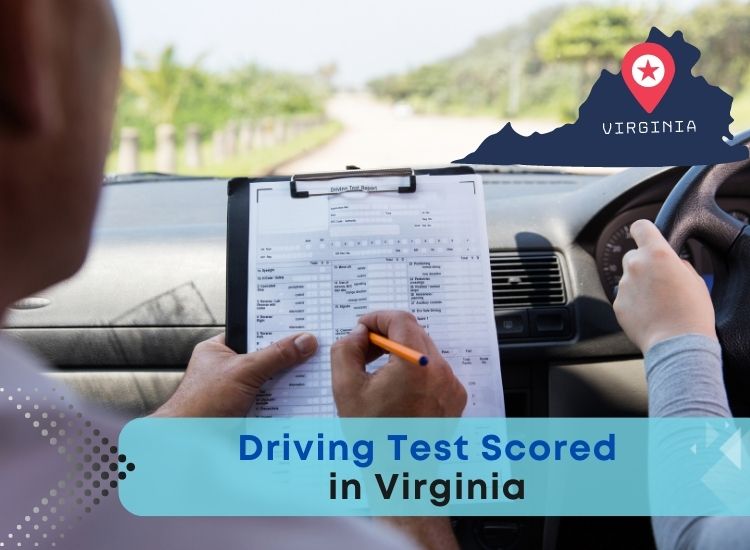How is the Driving Test Marked in Virginia?

Welcome to our comprehensive guide on how the driving test is marked in Virginia! We strive to provide you with accurate and valuable information to help you ace your driving test with confidence. In this part of our series, we will delve deeper into the specific aspects of the driving test in Virginia and explain how each component is evaluated. So let’s dive right in!
Preparing for the Driving Test
Before we discuss the marking criteria, it’s essential to emphasize the significance of adequate preparation. Being well-prepared not only boosts your confidence but also enhances your chances of passing the driving test in Virginia. Here are a few key areas to focus on during your preparation:
1. Knowledge of Traffic Laws and Regulations
A solid understanding of traffic laws and regulations is crucial for any aspiring driver. Familiarize yourself with the Virginia Driver’s Manual, which covers various topics such as road signs, right-of-way rules, and speed limits. Make sure you can confidently identify and interpret these elements during the test.
2. Vehicle Control and Handling
Mastering the art of vehicle control is another vital aspect of the driving test. Practice essential driving maneuvers such as starting and stopping smoothly, steering accurately, changing lanes, parallel parking, and executing safe turns. Remember to always adhere to proper signaling techniques and use your mirrors effectively.
3. Observational Skills
Developing strong observational skills is imperative for safe driving. Train yourself to be aware of your surroundings at all times. Practice scanning for potential hazards, checking blind spots, and maintaining a safe following distance. Being attentive and responsive to your environment will greatly contribute to your success on the driving test.
Pre-test Road test in Virginia
The Driving Test Marking Criteria
Now that we have covered the preparation phase, let’s explore how the driving test in Virginia is marked. The test evaluates your ability to apply your knowledge, skills, and judgment in various driving scenarios. The following sections outline the key components of the driving test and how they are assessed:
1. Vehicle Control
During the driving test, your examiner will assess your ability to control the vehicle effectively. This includes your proficiency in accelerating and decelerating smoothly, maintaining a steady speed, and using the vehicle’s controls appropriately. It is essential to demonstrate proper clutch, brake, and accelerator coordination, as well as smooth gear transitions if driving a manual transmission vehicle.
2. Lane Positioning and Changing
Proper lane positioning and changing are critical for safe and efficient driving. Your examiner will evaluate your ability to maintain the correct position within your lane, avoid drifting, and execute lane changes when necessary. Remember to signal your intentions, check your blind spots, and yield appropriately to other traffic.
3. Observation and Awareness
Maintaining a high level of observation and awareness is fundamental to safe driving. The examiner will assess your ability to identify and appropriately respond to traffic signs, signals, and road markings. Additionally, they will observe your awareness of other vehicles, pedestrians, and potential hazards in your surroundings.
On the Road: Navigating the Virginia Driving Test
4. Intersection Management
Intersections can be complex and require careful navigation. Your examiner will evaluate your approach to intersections, assessing your ability to judge appropriate gaps in traffic, execute turns safely, and yield the right-of-way when necessary. It is vital to demonstrate good judgment, signaling, and awareness at intersections.
5. Use of Signals and Mirrors
Proper use of signals and mirrors is crucial for effective communication and awareness on the road. The examiner will observe your ability to use turn signals accurately, check your mirrors frequently, and make informed decisions based on the information gathered. Demonstrating these skills consistently throughout the test will contribute positively to your overall evaluation.
6. Speed Management
Maintaining an appropriate speed is vital for both safety and adherence to traffic laws. Your examiner will assess your ability to adjust your speed according to road conditions, speed limits, and other factors. It is important to demonstrate a clear understanding of speed limits, especially in different zones such as residential areas, school zones, and highways.
What Drivers Need to Know About Speeding in Virginia
7. Following Distance
Maintaining a safe following distance between your vehicle and the one ahead is essential for preventing collisions. Your examiner will evaluate your ability to maintain a reasonable gap, allowing for adequate reaction time and space to stop if necessary. Remember to adjust your following distance based on weather conditions and the speed of the vehicle in front of you.
8. Communication and Cooperation
Effective communication and cooperation with other road users are key to safe and harmonious driving. Your examiner will observe your ability to communicate your intentions using appropriate signals, yield the right-of-way when required, and interact courteously with pedestrians, cyclists, and other drivers. Displaying good communication and cooperation skills reflects positively on your overall evaluation.
Conclusion
Successfully passing the driving test in Virginia requires a combination of knowledge, skills, and practical application. By understanding the marking criteria and dedicating sufficient time to prepare, you can greatly increase your chances of success. Remember to practice the essential driving maneuvers, develop strong observational skills, and maintain good communication and cooperation with other road users. We hope that this guide has provided you with valuable insights to help you excel on your driving test. Best of luck on your journey to becoming a confident and responsible driver in Virginia!
FAQs
1. How is the driving test marked in Virginia?
The driving test in Virginia is marked based on specific criteria. Evaluators assess various aspects, including vehicle control, lane positioning, observation skills, intersection management, use of signals and mirrors, speed management, and communication. Performance in these areas determines the overall test result.
2. What are the key areas of preparation for the driving test in Virginia?
To prepare for the driving test in Virginia, focus on understanding traffic laws, mastering vehicle control and handling, developing observational skills, practicing intersection management, using signals and mirrors effectively, managing speed, and improving communication with other road users.
3. How is vehicle control and handling evaluated during the driving test?
During the driving test, vehicle control and handling are evaluated by assessing factors such as smooth acceleration and braking, steady speed maintenance, proficient use of vehicle controls, accurate steering, and competent execution of driving maneuvers like parallel parking and lane changes.
4. What role do observational skills play in the driving test evaluation?
Observational skills play a crucial role in the driving test evaluation. Examiners assess how well you scan for hazards, check blind spots, maintain a safe following distance, identify and respond to traffic signs and signals, and stay aware of pedestrians, cyclists, and other vehicles on the road.
5. How is intersection management assessed during the driving test?
Intersection management is evaluated during the driving test by examining your approach to intersections, ability to judge safe gaps in traffic, execution of turns, and proper yielding of the right-of-way. Demonstrating good judgment, signaling, and awareness at intersections is essential for a successful evaluation.
6. What is the significance of using signals and mirrors effectively in the driving test?
Using signals and mirrors effectively is crucial during the driving test. It demonstrates your ability to communicate intentions, check surroundings, and make informed decisions. Proper use of turn signals, frequent mirror checks, and utilizing gathered information contribute to a positive evaluation of your driving skills.
7. How does speed management and following distance factor into the driving test evaluation?
Speed management and following distance are vital factors evaluated during the driving test. Examiners assess your ability to adjust speed according to road conditions and speed limits, as well as maintain a safe distance from the vehicle ahead. Adhering to speed limits and ensuring an appropriate following distance contribute to a successful evaluation.
Resources I Use
Resource 1: DMV Virginia – http://www.dmvNOW.com
Resource 2: DMV Virginia Locator : https://www.dmv.virginia.gov/DMVLocator/






